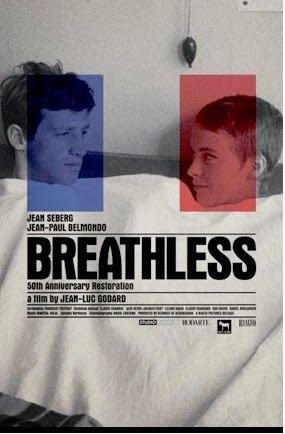 In an essay on Gallows, Roger Ebert says in many ways he considers this film to be the start of the French New Wave. A film movement that included the following rules: no film sets(making use, rather, of actual locations), naturalistic actors (de-glamoirizing the actors image), and moveable lighting set-ups to facilitate free flowing and moving camera shots. All usually done on a meager budget. Today this technique is almost always used in Independent Film Making or "Indie Films".
In an essay on Gallows, Roger Ebert says in many ways he considers this film to be the start of the French New Wave. A film movement that included the following rules: no film sets(making use, rather, of actual locations), naturalistic actors (de-glamoirizing the actors image), and moveable lighting set-ups to facilitate free flowing and moving camera shots. All usually done on a meager budget. Today this technique is almost always used in Independent Film Making or "Indie Films".Gallows opens with a man and a woman professing their love to one another, both talking into a phone. They have plans to run away together. This is all we know. The man, Julien Tavernier, goes about his day at the office. As we follow his activities we notice he is preparing a grappling hook, a gun, and a rope. For what? He proceeds to climb up the outside of his window to the window above, using the grappling hook and rope. Julien then murders his boss, who we quickly realize is the husband of the woman he is in love with, Florence Carala.
Florence waits patiently at a cafe while Jules gets in the elevator to leave the scene of the crime. As the elevator goes down, the building's security guard shuts the power off for the evening and our protagonist is stuck between floors and near the top of the tall building. This is the set up, which boldly prepares us for a clever series of events that does not fall short in delivering.
Julien is played smoothly by Maurice Ronet. He is undaunted by the pitfalls he encounters while trying to get to his love. Nor does he once go to pieces over the crime he has just committed. He is a man with a mission. Jeanne Moreau plays Florence with the desperation and insanity of a woman helpless, waiting and wandering the streets of Paris under the relentless spell of manic love.
 Director Louis Malle chose to shoot Jeanne Moreau with natural lighting and in close-ups with minimal make-up. Moreau was a French film darling at the time and this choice so enraged lab technicians that they even refused to process the film! There are plenty of supporting characters that I do not mention because
to mention them would also spoil the twists and turns in the plot. Each
character adds another layer and another world.
Director Louis Malle chose to shoot Jeanne Moreau with natural lighting and in close-ups with minimal make-up. Moreau was a French film darling at the time and this choice so enraged lab technicians that they even refused to process the film! There are plenty of supporting characters that I do not mention because
to mention them would also spoil the twists and turns in the plot. Each
character adds another layer and another world.There is a spontaneity to the pacing of Gallows that, like many French New Wave films, seems unplanned and improvised - a "free form" structure that keeps the viewer spellbound. Also understatement is key here. We are meant to observe everything but be distracted by nothing. A contrast to today's films where we are spoon fed plot developments while simultaneously being beat over the head with overt messages that would be so much more enjoyable if weaved into the subtext. Less is so much more with Elevator to the Gallows.





